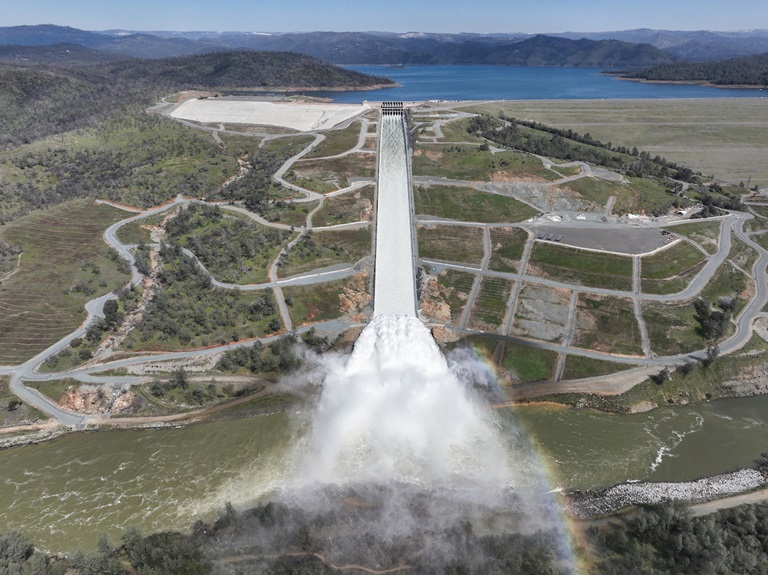Update on Lake Oroville Operations - March 19, 2023
DWR is maintaining releases from Lake Oroville to the Feather River at 35,000 cubic feet per second (cfs), with 23,000 cfs flowing through the low-flow channel within the City of Oroville. 
The Department of Water Resources (DWR) is maintaining releases from Lake Oroville to the Feather River at 35,000 cubic feet per second (cfs), with 23,000 cfs flowing through the low-flow channel within the City of Oroville. These releases are being made in coordination with the U.S. Army Corps of Engineers and downstream water operators for flood control protection to surrounding communities. DWR continues to closely monitor lake inflow levels and will adjust releases accordingly.
The information below reflects current reservoir level estimates. Forecasts can change quickly and may affect the estimates provided.
- Current Oroville Reservoir Level: 859 feet elevation
- Total Releases to the Feather River: 35,000 cfs
Oro Dam Blvd. E. between Rusty Dusty Road and Canyon Drive in Butte County remains closed. Higher releases from the main spillway cause excessive water spray across the road and reduce driver visibility, requiring a closure for public safety. Motorists may still access Oroville Dam and the State Recreation Area via State Route 162 (Oro Quincy Highway) and Canyon Drive. This section will remain closed to traffic until releases from the main spillway are reduced to a level that is safe for motorists.
The Lake Oroville reservoir is the largest storage facility in the State Water Project and supports environmental and water delivery needs to 27 million Californians and reduces flood risks to downstream communities. DWR continues to monitor lake levels, weather forecasts, and mountain snow levels to optimize operations for flood control, water storage and environmental protection while allowing for carryover storage into next year.
